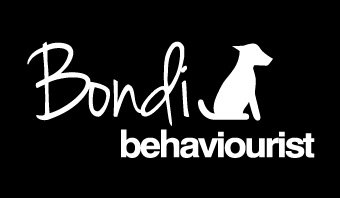Dog Parks - What You Need to Know
Dog park etiquette is often a tricky area to navigate because everyone has differring perceptions of what is acceptable.
To help you create positive experiences at the dog park here are some of the guidelines that we stand by:
If you do not have good recall over your dog when it is off leash, then think twice before letting it off. Is the situation appropriate? Are there kids running around? Are there sunbathers or people picnicing for your dog to jump all over? If its not appropriate then don't do it. If you let your leash off knowing it won't come back, you are setting yourself and your dog up to fail. Instead, work on your dog’s recall - take treats with you and reward your dog regularly for returning to you. Build up your communication skills gradually with your dog and avoid asking them to run before they can walk.
Keep your dog calm in the dog park. This does not mean your dog cannot play and have fun. However, an overstimulated dog is an incoherent dog that is unable to process information properly. If your dog cannot hear you when you call it back, it probably can't hear other dogs when they are trying to communicate. A dog park should be a social place where we are respectful of others personal space. This requires a certain level of manners and awareness that overstimulated dogs do not have.
"He is friendly" or "He just wants to play" are not excuses to let your dog run up to other and get in their personal space uninvited. We don't want other people doing this to us, and we would all react with a degree of discomfort if it did happen to us, so why do we think our dogs should tolerate it?
A social dog is not a dog that wants to play with everyone and everything. A social dog is a dog that can read a situation and react appropriately. Dog play is not all there is to socialising. Dogs that play well is as a result of a friendship or a trust between individuals that have built a relationship through communication. It is a conversation between those involved - a series of invites and gestures for space - it goes wrong when one dog stops listening to the other. If a dog no longer wants to play it is not being anti-social, it is in a position where it no longer feels comfortable, and it is the job of the other dog read this. The anti-social dog is the one that fails to read these signals.
"Socialisation is building a tolerance of others in your personal space"
No dog on earth has ever gone out for a walk for physical exercise. Dogs do not try to keep fit or keep a trim figure. Naturally dogs travel either alone, with familiar friends or family members. They explore and forage for food, taking in information left by others. They leave behind their own scents and information for the next passers by. In their world, everyone new is a potential threat until they know otherwise. New dogs can be treated as such so do not expect your dog to like all dogs they meet- do you like everyone you meet?
Allow your dog to explore, travel and forage. If your dog comes across a friend and they both want to play then great, but allow for change as well, does one want the game to stop? Or maybe someone else has joined in that is not welcome... thats ok, just be aware and adapt where necessary if you need to make your dog feel better again.
Avoid taking toys and balls to the dog park. They are valued resources that your dog or other dogs could potentially guard. Its a quick way to cause conflict and ruin everyones day. The dog that chooses to chase the ball relentlessly is likely to be chasing it out of compulsion, not play, it doesn't want that ball - it NEEDS it. If we look at how it is really behaving - It is choosing not to interact with the other dogs and people. Does it really want to be surrounded by people and dogs? If your dog doesn't play well with other dogs when there is no ball present, then it tells us very clearly that they do not enjoy the situation it is in, and that it is uncomfortable interacting with other dogs in this environment.
Is your dog the dog that runs up and staunches every dog it sees? It is nervous - it is unable to drop its guard around new dogs and is checking each individual to see if it is a threat - IT IS NOT TRYING TO DOMINATE THEM!! If this is your dog, please stop putting it in this situation. Too often dog owners use the term "just let them be dogs" when there is conflict. Physical conflict for a dog is a last resort. It is the result of a dog that has panicked due to the situation we have put it in... not because it wants to fight. They don't know we can take them to a vet or repair their wounds. If a child was repeatedly getting into a conflict because of the situation we put them in, we would stop it and look after them - we should be treating our dogs the same way.
Dog parks are a completely man made idea. No dog has ever thought, I wish I could go to a dog park!! Because they have no concept of what one is. It is a gathering of strangers who are forcing them to interact. Your dog didn't choose to be there - you chose for them to be there.
Do not reprimand your dog for an unwanted behaviour at the dog park. Take responsibility for your actions and the situation you put your dog in. Using the excuse "well everyone else does it this way" is lazy and no way to look after a family member. Try to educate yourself and understand why it is happening, you can then look after their needs instead. If you do take your dog to a dog park then be vigilant and take responsibilty of your dog’s behaviour. Keep the communication channels open, keep it positive and recognise whether your dog actually wants to be there or not.
Dogs that do not like the company of other dogs will not learn to like them more by being thrown in at the deep end. They are not comfortable with other dogs in their personal space so do not compromise them. On the other hand, removing other dogs from their environment for a couple of weeks could considerably reduce their stress levels. This in turn, may result in them being more tolerant of new things, once the cortisol levels have been reduced. If we put our dogs on a stress break more often and built tolerance gradually - by creating positive experiences and keeping a distance that does not cause stress - we can then start to see them grow in confidence and increase their curiosity of other dogs - increasing their tolerance.
Dogs are not able to make the choices of where they go and how they're treated but I know how I would prefer to be treated if the options were taken out of my hands.
If you’re struggling to know how much exercise is too much or if you’ve got a dog that simply won’t tire out despite how much you exercise them then you can always ask us! You can find us on Facebook - ‘Bondi Behaviourist’ or if you’re struggling a little more than that then take a look into our services and get in touch by booking a free Discovery Session. We’re happy to help.


